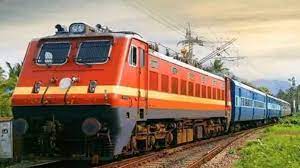Over the past nine years, Indian Railways has taken up modernization lead by manufacturing over 31,000 Linke Hofmann Busch (LHB) coaches. In the financial year 2018-19 after the national transporter ceased ICF manufacturing, traditional Integral Coach Factory (ICF) coaches were replaced by LHB coaches.
These LHB coaches with technological advancements have Anti-climbing arrangement, Air suspension with a failure indication system, and a less corrosive shell with various counterparts. This gives high-end comfort and aesthetics in a journey with utmost safety and enjoyable journey for the passengers.
The production of LHB coaches has increased since fiscal year 2018-19 with 4,175 coaches in the previous financial year through the support of Rail Coach Factory (RCF), ICF, and Modern Coach Factory (MCF). From this contribution there’s a 45% increase in the previous year production. The annual production figures are as follows: 4,429 coaches in FY 2018-19, 6,277 coaches in FY 2019-20, 4,323 coaches in FY 2020-21, and 6,291 coaches in FY 2021-22.
In October 1995, LHB coaches journey started after Indian Railways made an agreement with Linke—Hofmann—Busch (LHB) Germany, now M/s Alstom-LHB, for the transfer of technology. This collaboration was made to produce lightweight, high-speed coaches capable of running at 160 kmph on the Indian Railway system.
Conversion of several trains from conventional ICF rake to LHB rake are a part of recent developments. Remarkable examples include the Chhatrapati Shivaji Maharaj Terminus – Varanasi Mahanagari Superfast Express, Chhatrapati Shivaji Maharaj Terminus – Secunderabad Devagiri Express, and Solapur-Mysore Express.
On a whole, Indian Railways have improved with the shift to LHB coaches and it’s vital in today’s technology to provide safety, modernisation and comfort for passengers.

